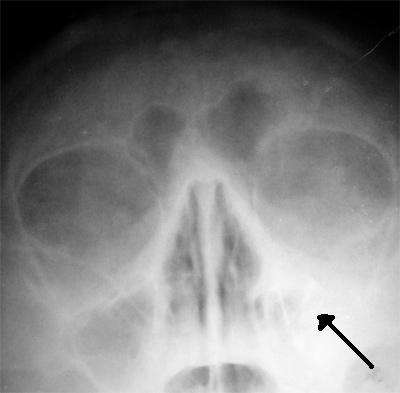
For eight years Dawn Burley, 27, battled chronic sinusitis, a condition associated with nasal congestion and pressure-related headaches – two symptoms which almost halted her career aspirations. on any given day, the severity of Burley’s symptoms often meant avoiding bright lights and loud noises – presenting significant obstacles for an aspiring graduate student hoping to pursue a career in social work in a big city. Nighttime wasn’t much better. Trouble breathing and coughing caused by a continual post-nasal drip made restful sleep a luxury, which resulted in a chronic fatigue that made studying – and life in general – almost impossible. After years of enduring pain and exhaustion with little relief, Burley feared that her quality of life would never get better.
“There is no other way to describe my life at that time other than just miserable,” says Burley. “Every morning, the first thing I would do was assess how I felt and then determine what my symptoms would and would not allow me to do that day. It was like being in prison – my condition literally controlled my life.”
As one of 7 million Americans battling chronic sinusitis each year, Burley’s experience is not unique. With sinusitis, the walls (or linings) of the sinuses become inflamed and swollen, preventing normal drainage and causing mucus and pressure to build up. Symptoms include secretion of a thick, yellow or greenish discharge from the nose or down the back of the throat, nasal congestion, or tenderness and swelling around the eyes, cheeks, nose and forehead. When sinusitis lasts longer than 12 weeks, or occurs more than three or four times per year, it’s considered chronic sinusitis.
Having visited numerous doctors and tried everything from over-the-counter to prescription medications, Burley eventually was referred to an ear, nose and throat (ENT) physician who recommended that she consider the minimally invasive Balloon Sinuplasty procedure to open the sinuses. Unlike traditional sinus surgery, Balloon Sinuplasty does not involve removing any bone or tissue, and can be performed in the doctor’s office, in addition to the operating room.
Balloon Sinuplasty is performed by inserting a specially-designed balloon into the nose to reach the inflamed sinus cavity. The small balloon is slowly inflated, gently widening and restructuring the walls of the sinus passage – without cutting and with minimal bleeding – helping to drain mucus from the blocked sinus and restore normal sinus drainage. while the procedure is usually performed under general anesthesia in an outpatient setting, some patients – like Burley – are candidates for an in-office procedure under local anesthesia. within days, Burley was back to her usual activities, feeling relief from painful headaches and congestion, and starting to enjoy her life again.
“Balloon Sinuplasty has had an incredible impact on my life. Before the procedure, my sinusitis symptoms and the horrible way they made me feel was all I knew – it was my ‘normal,’” says Burley. “It’s wonderful to realize that ‘normal’ can mean actually feeling good. I no longer have to plan my life around a condition that was stealing it.”
Today, Burley is now able to dedicate all of her time to pursuing her dreams as a social worker, fully embracing the big city and all it has to offer. “I hope that my experience inspires others to speak with their doctor about their sinus issues to see if they should see an ENT physician. It’s worth it – no one should have to suffer for years like I did.”
All medical procedures involve risks. Only a physician can tell you if treatment with Balloon Sinuplasty is right for you. To learn more about Balloon Sinuplasty, visit balloonsinuplasty.com.